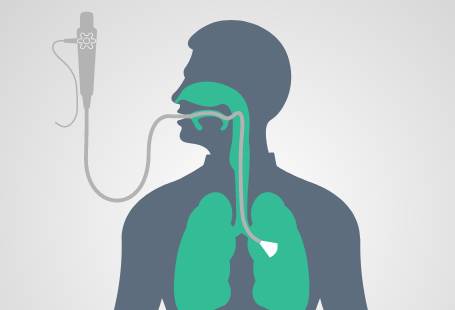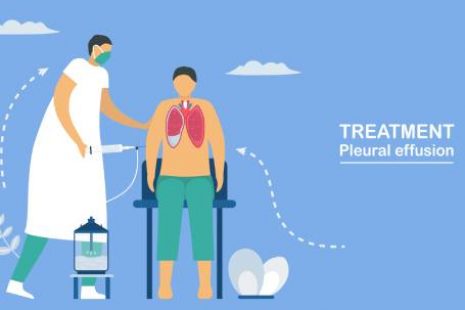Interventional Pulmonology
 Introduction
Introduction
 Types of Procedures
Types of Procedures
The two kinds basic procedures performed by pulmonologists are bronchoscopy and pleuroscopy.

 Bronchoscopy
Bronchoscopy
 Pleuroscopy
Pleuroscopy
Pleuroscopy is a means of putting a camera into the pleural space. The pleural space is located between the lung and chest wall. Pleuroscopy can be done to take biopsy samples or for drainage of fluid that may have accumulated in the pleural space.
We have included videos in the below useful m that give details of some of the interventional procedures that we hope you will find useful.

 Diagnosis of PAH
Diagnosis of PAH
 PAH is not often diagnosed easilybecause its early symptoms can be confused with those of other cardio-respiratory conditions. Symptoms can initially be subtle and relatively non-specific.
PAH is not often diagnosed easilybecause its early symptoms can be confused with those of other cardio-respiratory conditions. Symptoms can initially be subtle and relatively non-specific.
 PAH Tests
PAH Tests
If Your doctor suspects that you may have PAH, then he will order tests to see if there is a strain on the right side of yourheart.
- Electrocardiogram
- Chest X ray
- Pulmonary function tests
- Echocardiograph (ultrasound of your heart )
- Ventilation lung scan
- Abdominal ultrasound scan
 PAH Medications
PAH Medications
Oral anticoagulation (pills for thinning the blood) :
- Diuretics (pills for removing water)
- Oxygen treatment
Calcium channel blockers (pills): only for patients who respond to the acute vaso-reactive test performed.
- Synthetic prostacyclin and analogous prostacyclin
- Endothelin receptor antagonists (Pills)
- PDE-5 inhibitors (pills)
 DO’s and DON’Ts
DO’s and DON’Ts
 Asthma can’t be cured, but its symptoms can be controlled. Because asthma often changes over time, it’s important that you work with your doctor to track your signs and symptoms and adjust treatment as needed.
Asthma can’t be cured, but its symptoms can be controlled. Because asthma often changes over time, it’s important that you work with your doctor to track your signs and symptoms and adjust treatment as needed.
The key to living with asthma successfully is to keep it under control. Limit contact with asthma triggers in your environment, monitor your condition with a peak flow meter, and follow your treatment plan strictly.
Work on reducing asthma triggers. A first step is to stop smoking and protect yourself second-hand smoke in your home and in public places.
It is possible to be active and stay healthy when you’re living with asthma. In fact, many medal-winning Olympic athletes have asthma. Exercise strengthens your respiratory muscles, helps maintain weight.Exercises that are less likely to trigger asthma symptoms include swimming, walking, hiking, and leisurely biking. Sports that have short bursts of activity are also less likely to set off symptoms. Examples include baseball, football, and sprinting.
You may have to pace yourself at times or make some adjustments here or there, such as avoiding outdoor sports in the early morning, when pollen counts are at their highest (assuming pollen is one of your triggers).
Stress can be a trigger for asthma attacks. With that in mind, commit to implementing stress-reduction strategies into your life, such as breathing exercises, meditation, and other tactics.
Stay mindful of your emotional state. People with asthma may be more likely to develop anxiety or depression. If you begin to feel down or depressed, talk with your doctor. Help is available.
Asthma presents a number of day-to-day challenges that need to be overcome. Take steps to make it easier for you to commit to these
Simply checking and recording peak flows once per day could make a big difference in your asthma control. A low number can indicate you may be headed toward an asthma attack.
Learn how to use your medications correctly. Find out all you can about your asthma medicine, including how and when to take it, potential side effects, and how it controls your asthma. If you use a metered dose inhaler, learn how to use it properly.
Talk to your doctor about adjusting your routine if compliance is becoming an issue or you are experiencing side effects.
Not having your rescue inhaler immediately available can be dangerous. Because you have no idea when you might need it, consider keeping a spare in your backpack, purse, desk, or any place Even people who take their asthma medicine exactly as prescribed and who work to avoid triggers can have the occasional asthma attack. It's essential to have an asthma action plan in place for those times. This will include symptoms to look for, actions to take, danger signs, avoiding triggers, medication instructions, and when to call your doctor or go to the emergency room.
Useful Material






CONNECT WITH THE LEADERS IN THE SOCIETY






